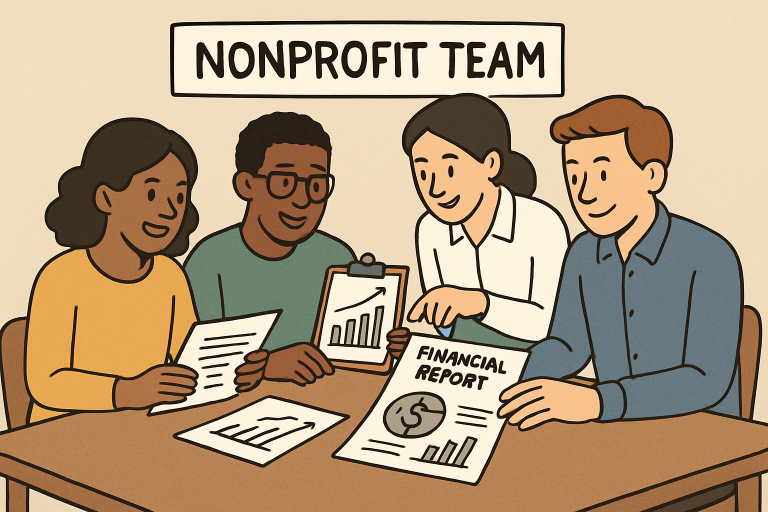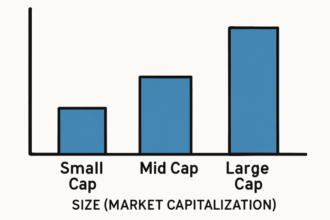Best Practices for Financial Oversight in Nonprofits

Financial oversight is a cornerstone of effective nonprofit management. Ensuring responsible use of resources not only enables mission success but also builds credibility with the public and funders. Organizations that adopt structured financial practices, often in partnership with a non profit accounting firm, can better withstand uncertainty while maintaining trust with their supporters. These strategies extend beyond simple accounting, providing a holistic approach to managing, safeguarding, and reporting the organization’s finances.
Transparent and disciplined financial oversight empowers organizations to be agile, maximize their impact, and fulfill their vision. Whether you’re a nonprofit leader or board member, applying best practices helps your team navigate regulatory requirements, maintain donor confidence, and build a sustainable future.
Table of Contents
Establishing Clear Financial Policies
Sound financial policies pave the way for consistency and accountability. Nonprofits should create detailed documentation for key processes, including budgeting, spending approvals, and financial reporting, to ensure transparency and accountability. These policies clarify decision-making authority, reduce ambiguity, and discourage mismanagement. By having clear written policies, everyone from the executive director to program managers knows what is expected and required at each financial checkpoint.
These guidelines should be periodically reviewed and updated to reflect changes in funding streams, regulatory environments, and organizational growth. Consulting with experienced professionals and accountants ensures policies are in line with current best practices and regulations. According to guidance from the National Council of Nonprofits, well-crafted policies are a foundation for accountability and organizational health.
Implementing Internal Controls
Internal controls are vital safeguards to protect an organization’s funds and ensure the accuracy of its financial information. Essential elements of a sound internal control system include:
- Segregation of Duties: Assign different people to authorize transactions, record them, and handle assets. This reduces risk by requiring two or more people to complete critical financial functions.
- Regular Reconciliations: Performing monthly bank and account reconciliations helps spot errors or potential fraud early.
- Expense Documentation: Ensure that all spending is supported by receipts, invoices, or contracts, and maintain organized records for easy review and auditing.
Routine internal and external audits reinforce these controls, ensuring boards, donors, and regulators are assured.

Conducting Regular Financial Reviews
Conducting monthly and quarterly reviews of key financial reports—such as budgets, balance sheets, income statements, and statements of activities—is crucial for maintaining strong transparency and accountability within a nonprofit organization. These routine evaluations provide leadership with a clear view of the organization’s financial health, ensuring that resources are being utilized effectively to support mission-driven goals. By comparing actual spending and revenue to projected budget figures, nonprofits can quickly spot discrepancies, assess whether they are one-time occurrences or signs of deeper issues, and take timely corrective measures. Involving board members in these reviews strengthens governance, as their professional backgrounds often provide valuable insights and questions that enhance oversight and accountability. Additionally, regular financial analysis enables organizations to identify emerging trends, anticipate cash flow challenges, and plan accordingly, thereby promoting long-term stability and responsible stewardship.
Leveraging Technology for Financial Management
Modern nonprofit accounting is increasingly digital. Financial management software helps nonprofits automate data entry, streamline reporting, and analyze spending patterns more effectively. Cloud-based tools, in particular, enable real-time access to fiscal data for leaders and board members wherever they are. Automation reduces manual errors, while dashboards provide an at-a-glance overview of financial health. Integrating technology into financial oversight not only saves time but also supports transparency and informed decision-making. Numerous affordable solutions are tailored to meet the specific needs of nonprofits.
Ensuring Compliance with Regulations
Nonprofits must comply with a complex web of federal, state, and local regulations. Staying current with IRS rules for charity status, annual tax filings, and grant reporting requirements is essential. Maintaining organized records, such as receipts and donor acknowledgments, facilitates easier auditing and quicker responses to regulatory inquiries. Regular compliance audits, whether conducted by internal staff or outside professionals, can identify areas for improvement and mitigate organizational risk. Insights from the Florida Nonprofit Alliance highlight the importance of thoughtful compliance strategies in preventing costly mistakes and aligning operations with the sector’s best practices.
Building Financial Reserves
Financial reserves act as a buffer during periods of funding volatility or financial emergencies. Experts recommend establishing reserves that cover three to six months of core operating expenses. Having this safety net means your mission can continue even when grants lapse or fundraising falls short, providing the flexibility to recover and plan for the long term. Regularly contributing to and reviewing your reserve fund should be part of the organization’s annual financial routine.
Prioritizing Transparency and Communication
Open communication about an organization’s financial position builds trust and credibility with donors, beneficiaries, and the broader community. Publishing annual reports, sharing detailed financial statements, and holding regular financial briefings with stakeholders all demonstrate accountability. Transparent and open financial reporting also makes the organization a more attractive partner for future donors, grantmakers, and collaborators. According to CNBC, transparent nonprofits are more likely to enjoy long-term success and donor loyalty.
Investing in Staff Training
Continuous professional development empowers both staff and board members to fulfill their financial oversight roles. Training should address current best practices in budgeting, reporting, and compliance. Ensuring that all financial staff have up-to-date knowledge—through webinars, workshops, or formal courses—ensures the organization can adapt to regulatory changes, implement new technology solutions efficiently, and respond confidently to emerging challenges.
Implementing a culture of regular financial training also increases job satisfaction, improves retention, and strengthens the organization’s collective financial management capacity.
By integrating these best practices into the fabric of your nonprofit, you create a resilient organization, one that is prepared for both day-to-day realities and long-term sustainability. Careful financial oversight is not just good stewardship—it is integral to achieving your nonprofit’s mission and earning the continued trust of your supporters.

